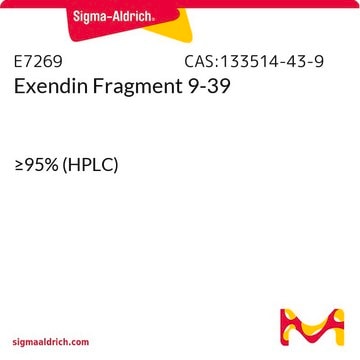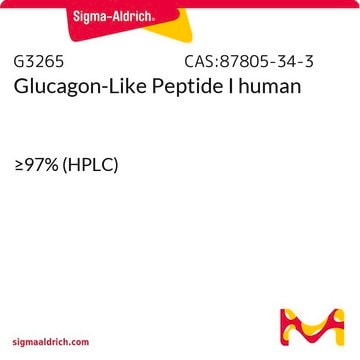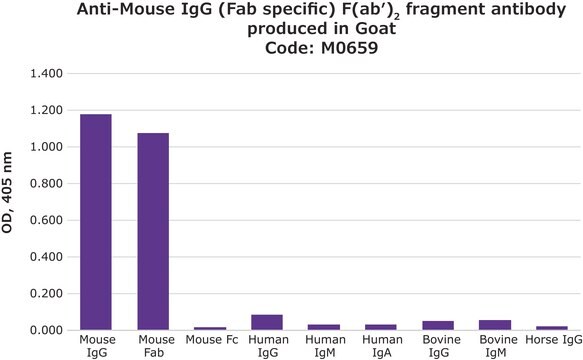F2772
Anti-Mouse IgG (Fc specific) F(ab′)2 fragment−FITC antibody produced in goat
flow cytometry grade, affinity isolated antibody, buffered aqueous solution
About This Item
Produits recommandés
Source biologique
goat
Conjugué
FITC conjugate
Forme d'anticorps
affinity isolated antibody
Type de produit anticorps
secondary antibodies
Qualité
flow cytometry grade
Clone
polyclonal
Forme
buffered aqueous solution
Conditions de stockage
protect from light
Technique(s)
flow cytometry: 1:100
immunohistochemistry (formalin-fixed, paraffin-embedded sections): 1:160
Température de stockage
−20°C
Modification post-traductionnelle de la cible
unmodified
Vous recherchez des produits similaires ? Visite Guide de comparaison des produits
Description générale
Fluorescein isothiocyanate (FITC) is a fluorescein derivative (fluorochrome) used to tag antibodies, including secondary antibodies, for use in fluorescence-based assays and procedures. FITC excites at 495 nm and emits at 521 nm.
Anti-mouse IgG is conjugated to Fluorescein Isothiocyanate (FITC), Isomer I. The F(ab′)2 antibodies isolated from goat antiserum by affinity chromatography, react specifically with mouse IgG Fc; does not bind other mouse Igs. No cross reaction is observed with mouse Fab fragment. The antibody shows minimal cross reaction with human, horse and bovine proteins on tissue or cell preparations.
Spécificité
Immunogène
Application
- flow cytometry for labelling of human peripheral blood lymphocytes (dilution of 1:100) and label human polymorphonuclear cells (PMNs) (dilution of 1:50).
- immunocytochemistry using human embryonic stem cells
- immunohistochemistry at a working dilution of 1:160.
Immunohistology: A minimum dilution of 1:160 is determined by indirect immunofluorescence on formalinfixed, and paraffin-embedded human tonsil using mouse monoclonal anti-human IgG as the primary antibody.
Actions biochimiques/physiologiques
Autres remarques
Forme physique
Notes préparatoires
Useful when trying to avoid background staining due to the presence of Fc receptors.
Clause de non-responsabilité
Not finding the right product?
Try our Outil de sélection de produits.
Code de la classe de stockage
10 - Combustible liquids
Classe de danger pour l'eau (WGK)
nwg
Point d'éclair (°F)
Not applicable
Point d'éclair (°C)
Not applicable
Équipement de protection individuelle
Eyeshields, Gloves, multi-purpose combination respirator cartridge (US)
Certificats d'analyse (COA)
Recherchez un Certificats d'analyse (COA) en saisissant le numéro de lot du produit. Les numéros de lot figurent sur l'étiquette du produit après les mots "Lot" ou "Batch".
Déjà en possession de ce produit ?
Retrouvez la documentation relative aux produits que vous avez récemment achetés dans la Bibliothèque de documents.
Les clients ont également consulté
Notre équipe de scientifiques dispose d'une expérience dans tous les secteurs de la recherche, notamment en sciences de la vie, science des matériaux, synthèse chimique, chromatographie, analyse et dans de nombreux autres domaines..
Contacter notre Service technique








